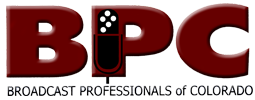One of the primary purpoes of this organization is to preserve the history of broadcasting in Colorado through items submitted by the people who made the industry what it is today.
We are looking for veterans of Colorado's broadcasting history to submit station histories, audio and video excerpts, old promo materials and photographs detailing Colorado's broadcast heritage and featuring the personalities who worked on the air and behind the scenes.
If you have items you'd like to submit to this project, download our Donation Form and return it to BPC. |
BPC President Steve Conklin appeared on Colorado Public Radio's Colorado Matters program to discuss the history of radio in Colorado and the new "Don't Touch That Dial" exhibit at the Aurora History Museum. Click here for streaming audio and historic sound from notable historic broadcasting figures. |
From Don Mueller
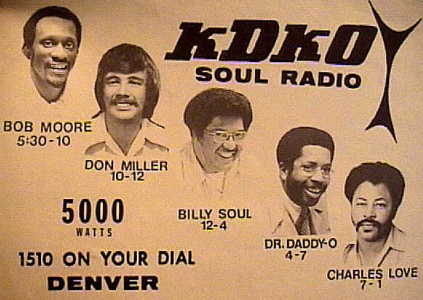
KDKO - Denver's Soul Radio. A tribute page for Denver's R&B and Soul music station with additional pictures and airchecks from Dr. Daddio, Billy Soul, The Night Hawk, King Arthur, and of course, "Don Miller" |
From Phil Stinemates
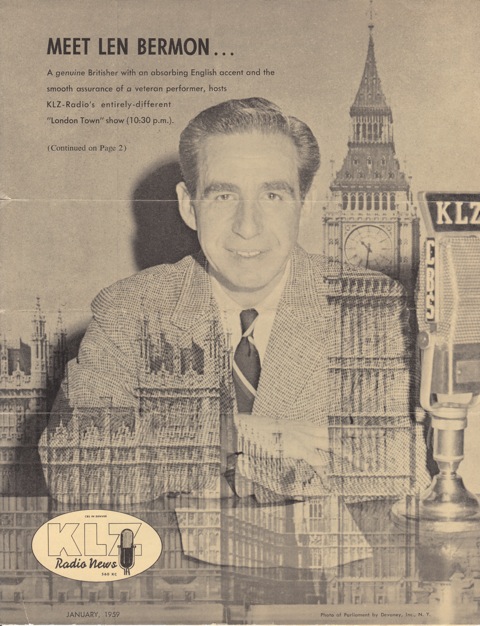
|
From Merwin Smith
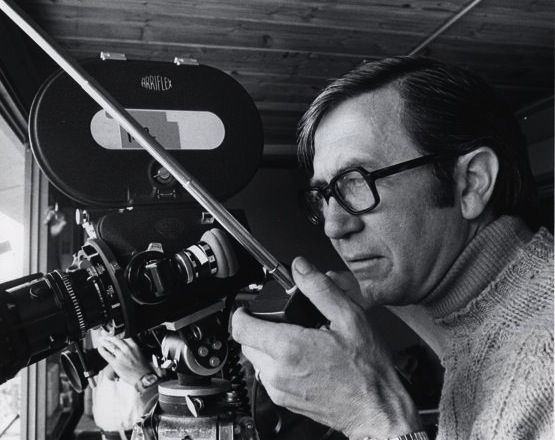
Longtime Channel 7 Cameraman Rolly Dahlquist. |
From Merwin Smith:
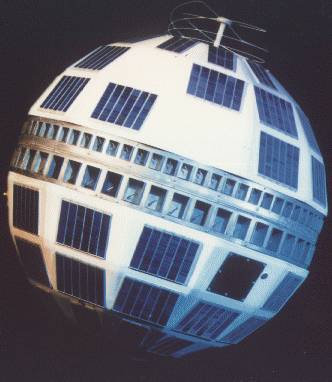 TELSTAR BROADCAST 1963 TELSTAR BROADCAST 1963
Few people know that KLZ-TV Channel 7 in Denver played a role in one of the earliest satellite broadcasts in history. On July 10, 1963, CBS News presented "Town Meeting Of The World", the first instaneous hookup among nations utilizing the Telstar communications satellite.
The participants were former President Eisenhower in Denver, Sir Anthony Eden in London, Jean Monnet in Belgium, and Heinrich von Brentano in West Germany with Walter Cronkite moderating from New York.
Merwin Smith has some recollections of the broadcast:
I just found in my old files the information on the Telstar broadcast I was involved in at Channel 7 in 1963. It was a historic first. We had many CBS engineering types swarming our studio and security on the day was heavy for those days because of the appearance of President Eisenhower. The Telstar satellite was not in synchronous orbit then, so there was just one approximate 90-minute "window" during which we could connect. CBS brought in the rather complicated Eidophor rear projector to show the other participants with the President in the studio. The day before the live broadcast we did a live test during the window, with me sitting in the chair to be occupied by President Eisenhower and chatting with Walter Cronkite. I remember Cronkite's telling me to say hello to Hugh Terry.
I was PD at Channel 7, KLZ-TV, at the time. We were in the old building. I acted as a sort of liason between the CBS crew and our staff and participated in the previous day's test, sitting in Eisenhower's place in the studio while the tech people checked the audio and Eidophor projector. Eisenhower got his fair share of time. I have no idea what the costs to CBS were. During the broadcast there was a small studio audience. I stood by just outside the studio to get many rolls of 35 mm black and white film to get to our darkroom for immediate processing. I'm trying to remember the name of the pool photographer who was from one of the newspapers. I recall he had a couple of cameras around his neck and took many, many pictures. The security was fairly tight for those days. We had little colored lapel buttons from the Secret Service that according to color designated where in the station one was allowed to go. Mine let me go anywhere. It was a really exciting, wonderful experience.
Cheers!
MS |
From Dick McMahon:
Found a couple of old KLZ tapes so far (I have a few more buried somewhere), and I've uploaded this first one to my website if you want to hear it. It's a 15-min broadcast we fed to CBS in 1959. Click Here. |
Don Mueller - Historic Denver Radio mp3 files
The final remote broadcast from the Trocadero Ballroom at Elitch Gardens
Bill Saul hosts a KOA remote from the Brown Palace Hotel in 1981, featuring the music of the Dean Bushnell Orchestra, Phil Nelson and the San Marco Strings. |
A Brief History of KMGH-TV, Denver's Channel 7
The legacy of KMGH began in the 1920s when KLZ Radio became a powerhouse in Denver broadcasting. KLZ was a pioneer in FM radio in the 1940s and added KLZ-TV in 1953. This article focuses primarily on the history of the television station.
http://www.thedenverchannel.com/denvers7/415541/detail.html |
Don Bishop's Home Page
Former Denver radio personality Don Bishop has created a website summarizing his broadcasting history, including number of links to pages outlining the history of a number of Denver radio stations. There are numerous pictures, promo materials, rate cards and playlists on these pages.
Some of the stations with tribute pages are:
KLZ-FM One of the first FM Stations in the country and a pioneer in FM rock radio.
KFML-FM
KBTR
KTLK
KDKO |
A Test Pattern from KFEL-TV, Denver's First Television Station
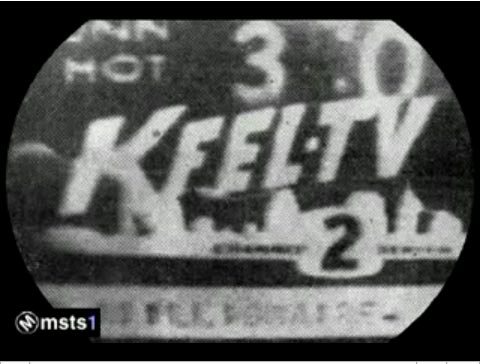
KFEL is now KWGN-TV Channel 2. To see more test patterns from the early days of television, check out this YouTube video. |
From Merwin Smith:
Want to know more about historic transmitters, especially the 50,000 watt variety, check out these links. Featured is WLW in Cincinnati's monster 500,000 watt transmitter that operated in the 1930s.
http://www.hawkins.pair.com/wlw.shtml
http://www.ominous-valve.com/wlw.html
http://www.oldradio.com/archives/stations/cinc/wlwpix.htm |
| Joe Wicks' KIMN Tribute Site - Recollections, pictures and audio from Denver's legendary AM-950. |
From Don Mueller:
In my usual surfing the Internet, I stumbled across a website of a radioman who did some Denver work at KTLN in the 50s and 60s -- his airname was Johnny Rowe, his real name John Rook. At his website he talks about working with Ray Durkee, Joe Finan, Arch Andrews, tells some stories and there's some interesting pictures. |
Radio In Colorado
In the 1920s, radio moved from being a passion of hobbyists who built their own receivers to the first true mass medium with the power to bring news, sports and entertainment from the largest cities to the smallest towns. Stations sprang up all over Colorado, and many of today's current stations trace their roots back to the earliest days of industry.
Denver Radio: 80 Years Of Change
- by Tom Mulvey |
Television In Colorado
Television came to Colorado in the early 1950s. It was the era of live programming, black and white pictures on small screens and fascinating characters in a young and rapidly changing business. Many longtime radio broadcasters moved over to this new medium and a number of new personalities came along as the industry matured in the 1960s and 70s.
A History Of Television
In Denver: By Ken Custer and Tom Mulvey
More on the early history of television
in Pueblo - KDZA-TV by Ed Taylor.
KCSJ-TV Pueblo - In The Beginning: By Bill Baker |
| |
|
